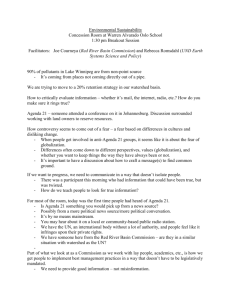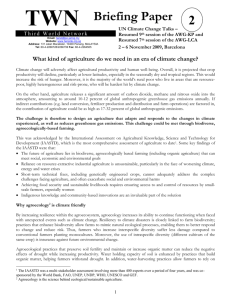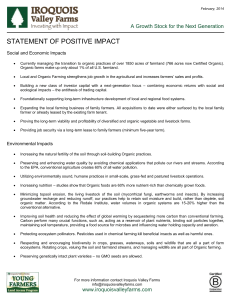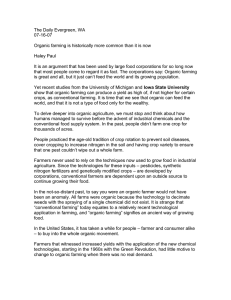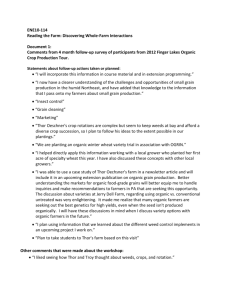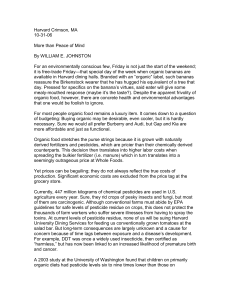Carbon footprint, air-freighted v local produce, organic v
advertisement
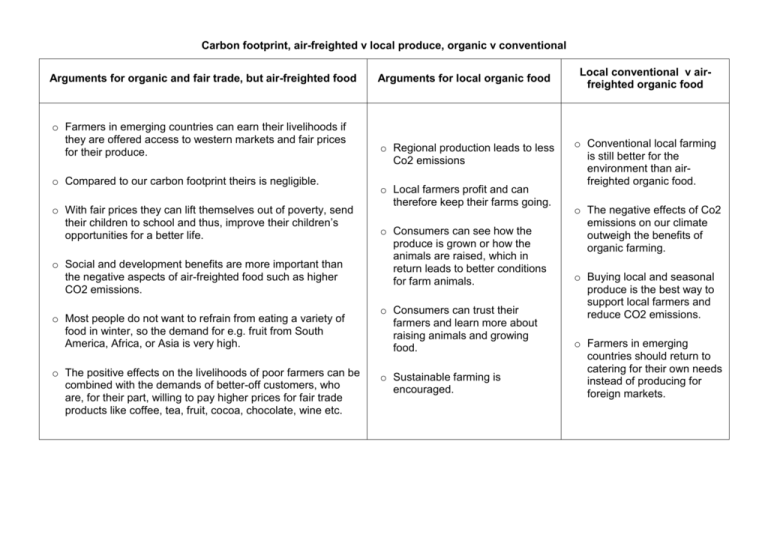
Carbon footprint, air-freighted v local produce, organic v conventional Arguments for organic and fair trade, but air-freighted food o Farmers in emerging countries can earn their livelihoods if they are offered access to western markets and fair prices for their produce. o Compared to our carbon footprint theirs is negligible. o With fair prices they can lift themselves out of poverty, send their children to school and thus, improve their children’s opportunities for a better life. o Social and development benefits are more important than the negative aspects of air-freighted food such as higher CO2 emissions. o Most people do not want to refrain from eating a variety of food in winter, so the demand for e.g. fruit from South America, Africa, or Asia is very high. o The positive effects on the livelihoods of poor farmers can be combined with the demands of better-off customers, who are, for their part, willing to pay higher prices for fair trade products like coffee, tea, fruit, cocoa, chocolate, wine etc. Arguments for local organic food o Regional production leads to less Co2 emissions o Local farmers profit and can therefore keep their farms going. o Consumers can see how the produce is grown or how the animals are raised, which in return leads to better conditions for farm animals. o Consumers can trust their farmers and learn more about raising animals and growing food. o Sustainable farming is encouraged. Local conventional v airfreighted organic food o Conventional local farming is still better for the environment than airfreighted organic food. o The negative effects of Co2 emissions on our climate outweigh the benefits of organic farming. o Buying local and seasonal produce is the best way to support local farmers and reduce CO2 emissions. o Farmers in emerging countries should return to catering for their own needs instead of producing for foreign markets.
